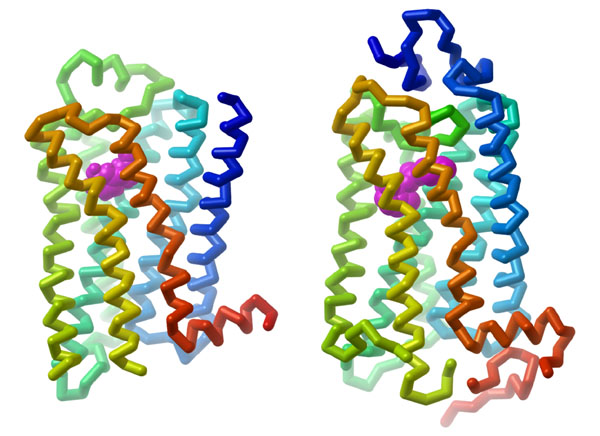|
Inhaltsübersicht | Nanomaschinen | Moleküle | Programme | Kurse | Fun | Links |
||
| > |
Adrenergic Receptors

Receptors Everywhere
The adrenergic receptors are part of a large class of similar proteins, collectively known as G-protein-coupled receptors, often abbreviated GPCR. These receptors play many diverse and important roles in human health. By some estimates, there are almost a thousand different types in the human genome, including hundreds of receptors for taste and smell. Many widely-used drugs, such as Prozac®, Claritin® and Zoloft®, act by binding to these receptors. In spite of their importance, they have been extraordinarily difficult to study, since they are normally buried inside a membrane. For many years, the structure of rhodopsin was the only structure available for this class of proteins, and many studies have been performed using rhodopsin as the starting point for structural study of other receptors. This is a successful approach because the receptors are all very similar. They are composed of one chain that snakes back and forth across the membrane seven times. For this reason, they are occasionally also called serpentine receptors. The meandering path of the protein chain is shown here for two GPCR structures: the adrenergic receptor (left, PDB entry 2rh1) and rhodopsin (right, PDB entry 1f88). This illustration was created with the Python Molecule Viewer.
Last changed by: A.Honegger,